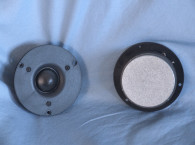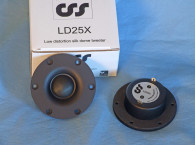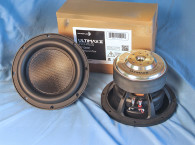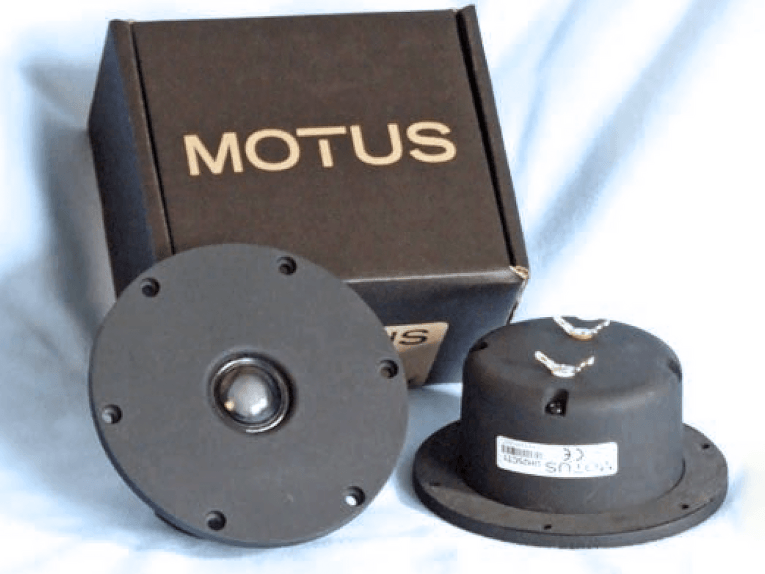
In terms of features, the new Motus UH25CT1 tweeter employs a 26-mm (1”) diameter treated-cloth dome diaphragm, which is a proprietary design sourced from Japan, a 1” two-layer underhung voice coil with 0.3-mm Xmax wound with copper-clad aluminum wire (CCAW) on an aluminum former (see Photo 1). This former features six vent holes and is damped with ferrofluid for cooling.
Other features include a damped (fiberglass instead of foam) vented and an extended/undercut pole exhausting into a damped rear chamber (also fiberglass damped), a copper shorting ring in the gap area, and a second aluminum shorting ring mounted into the neodymium N48SH ring magnet. There are also eight vent holes beneath the tweeter surround to minimize back pressure applied to the surround. Keeping to the high-end motif, Motus uses Cardus Audio internal wire to go from the voice coil to the gold-plated terminals. Last, both the faceplate and rear cup are die-cast aluminum.
Testing commenced using the LinearX LMS analyzer to produce the 300-point impedance sweep shown in Figure 1. The magnetic fluid damped resonance occurs at a low 463 Hz. With a 4.61-Ω DCR, the minimum impedance for this tweeter is 5.15 Ω at 3.3 kHz.
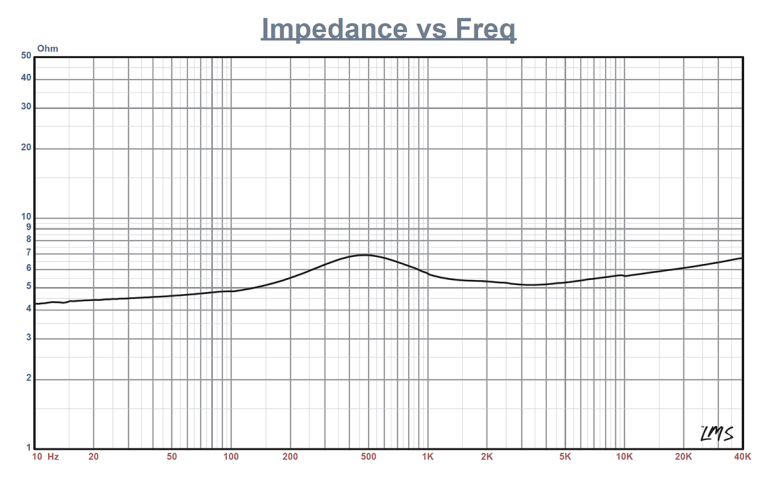

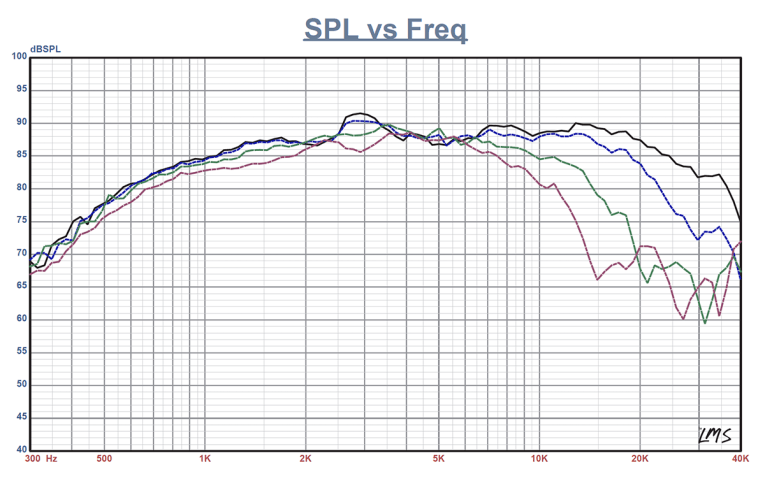
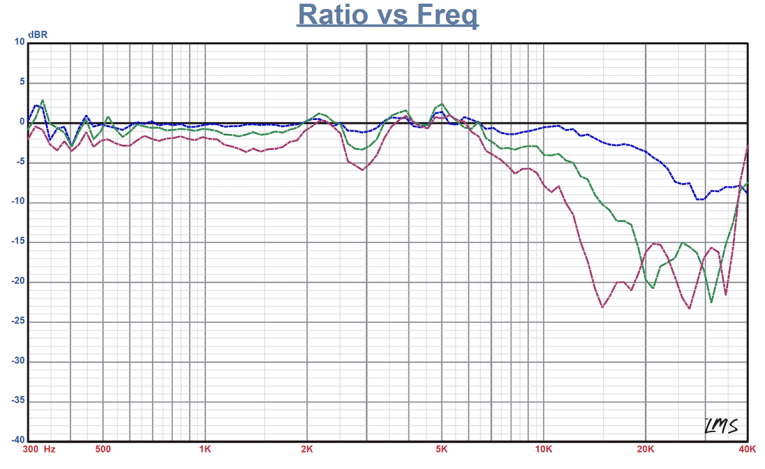
Following the impedance test, I recess mounted the Motus tweeter in an enclosure that had a baffle area of 8” × 10” and measured the on- and off-axis frequency response with a 100-point gated sine wave sweep at 2.83 V/1 m.
Figure 2 shows the on-axis response to be a rather flat ±2.2 dB from 3 to 21 kHz, and from 1 to 24 kHz, ±3.2 dB. Figure 3 depicts UH25CT1’s on- and off-axis response, with the off-axis curves normalized to the on-axis response in Figure 4. The two-sample SPL comparison is shown in Figure 5, indicating the two samples were closely matched, with a small 1-dB variation between 7 and 13.5 kHz.

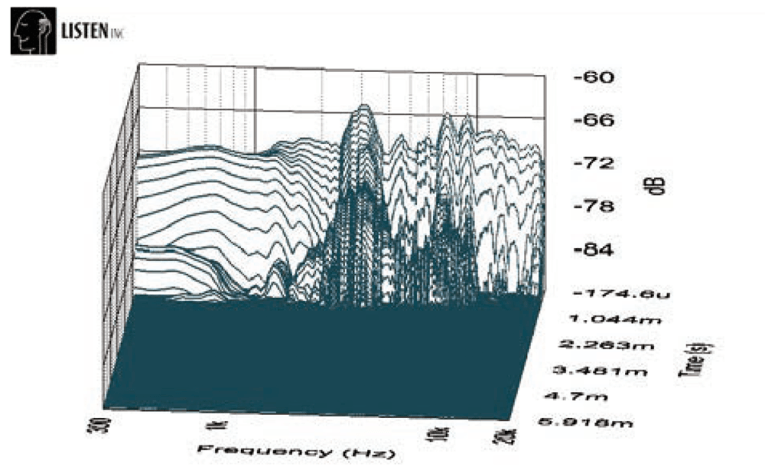
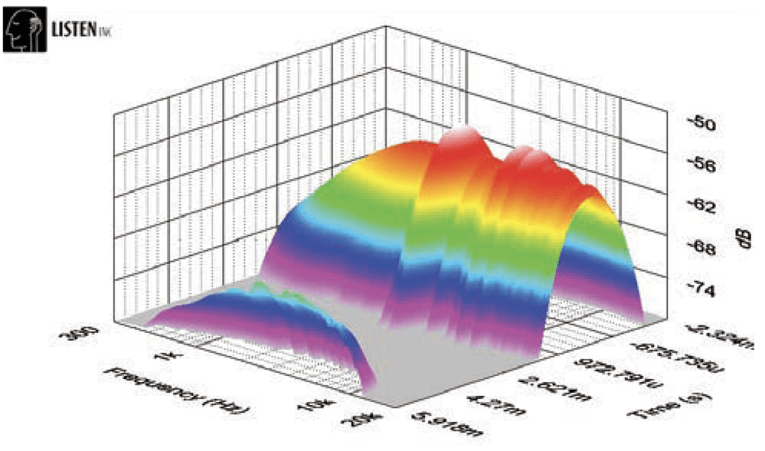
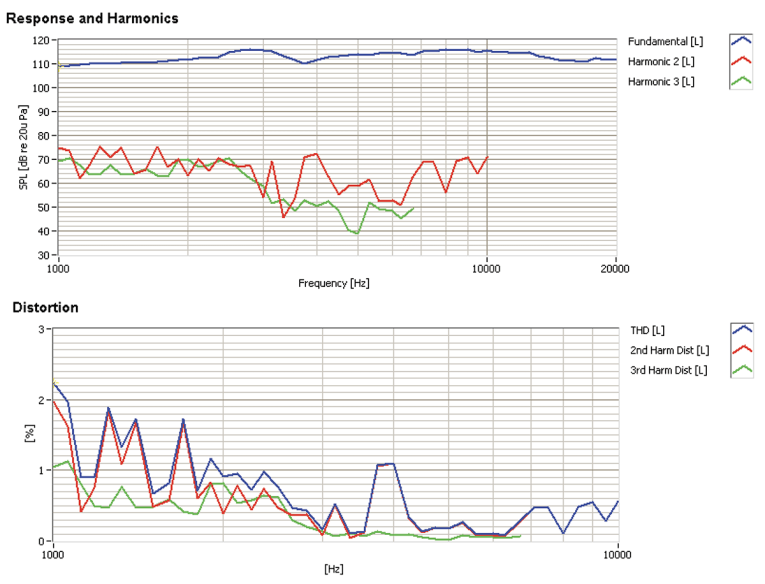
Next, I initialized the Listen SoundCheck analyzer along with the Listen SCM 0.25” microphone (provided by Listen) to measure the impulse response with the tweeter recess mounted on the test baffle. Importing this data into the Listen SoundMap software produced the cumulative spectral decay plot (CSD) waterfall plot shown in Figure 6. Figure 7 shows a short-time Fourier transform (STFT) displayed as a surface plot. For the final test procedure, I used a pink-noise stimulus to set the 1-m SPL to 94 dB (1.5 V), and measured the second- and third harmonic distortion at 10 cm (see Figure 8). For more information on this and other Motus transducers, visit www.motusaudio.com. VC
This article was originally published in Voice Coil, December 2012





